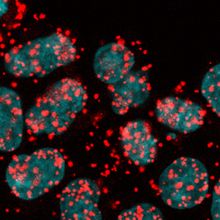Mycoplasma genitalium, a bacterium known to cause urethritis, made headlines in 2008 when J. Craig Venter and colleagues announced that they had manufactured and assembled the organism’s 600,000 base pair genome. Now, the microbe is in the news again—this time for becoming the first organism to be fully modeled by a computer program.
Bioengineering professor Markus Covert of Stanford University and colleagues scoured some 1,000 papers in the scientific literature to glean the information needed about the functions of M. genitalium proteins and genes to model how the bacterium behaves in the real world. In the end, they constructed a computer simulation that incorporates every known gene function. The team published its results last week (July 19) in Cell.
"So far, it all works great," Covert told The Chronicle of Higher Education. "We were able to recapitulate a lot of the behaviors of the cell." Running hundreds...
Past modeling studies have created programs that reflected certain functions of cells, such as the metabolism of E. coli, but this is the first to model an entire organism. But with only 460 genes, however, M. genitalium is a relatively simple. (By comparison, the metabolic E. coli model involved about 1,300 genes.) Still, the new model is an important first step."He did this for the entire cell," bioengineer Bernhard Palsson of the University of California at San Diego told The Chronicle. "So that's the achievement here."
Such models could help uncover mechanisms involved in cancers and other diseases, Covert added. "The simple fact is, there's no way we are going to wrap our heads around cancer or any complex disease without a computer model, and so I see this as definitely a big start," he told The Chronicle.




